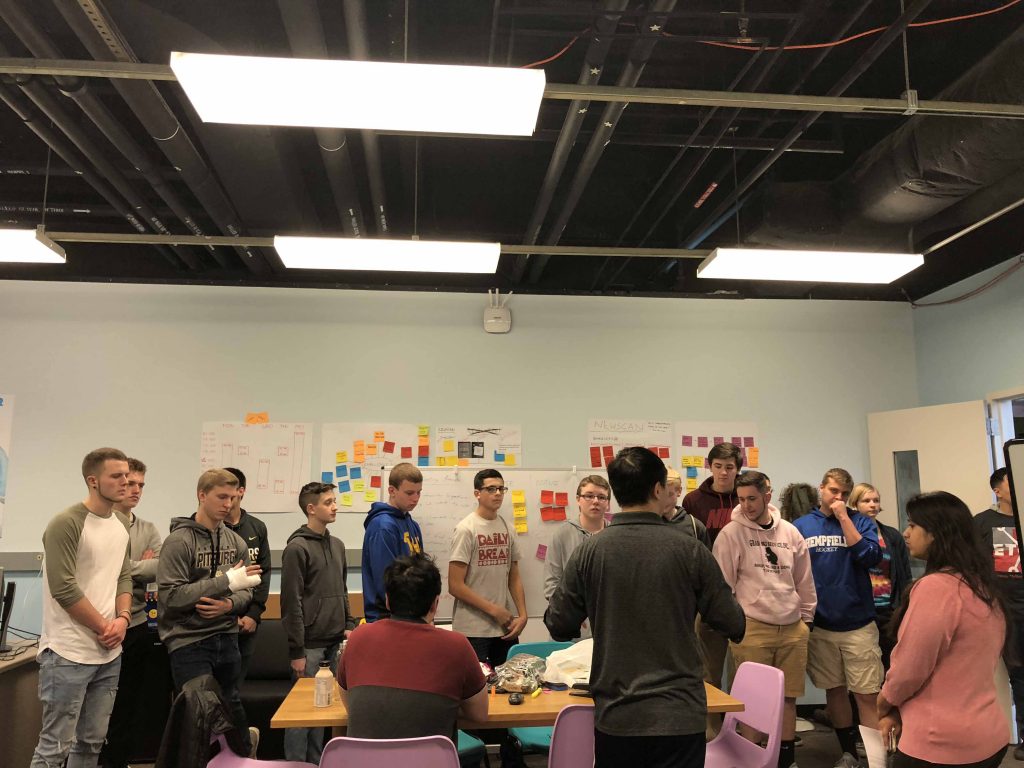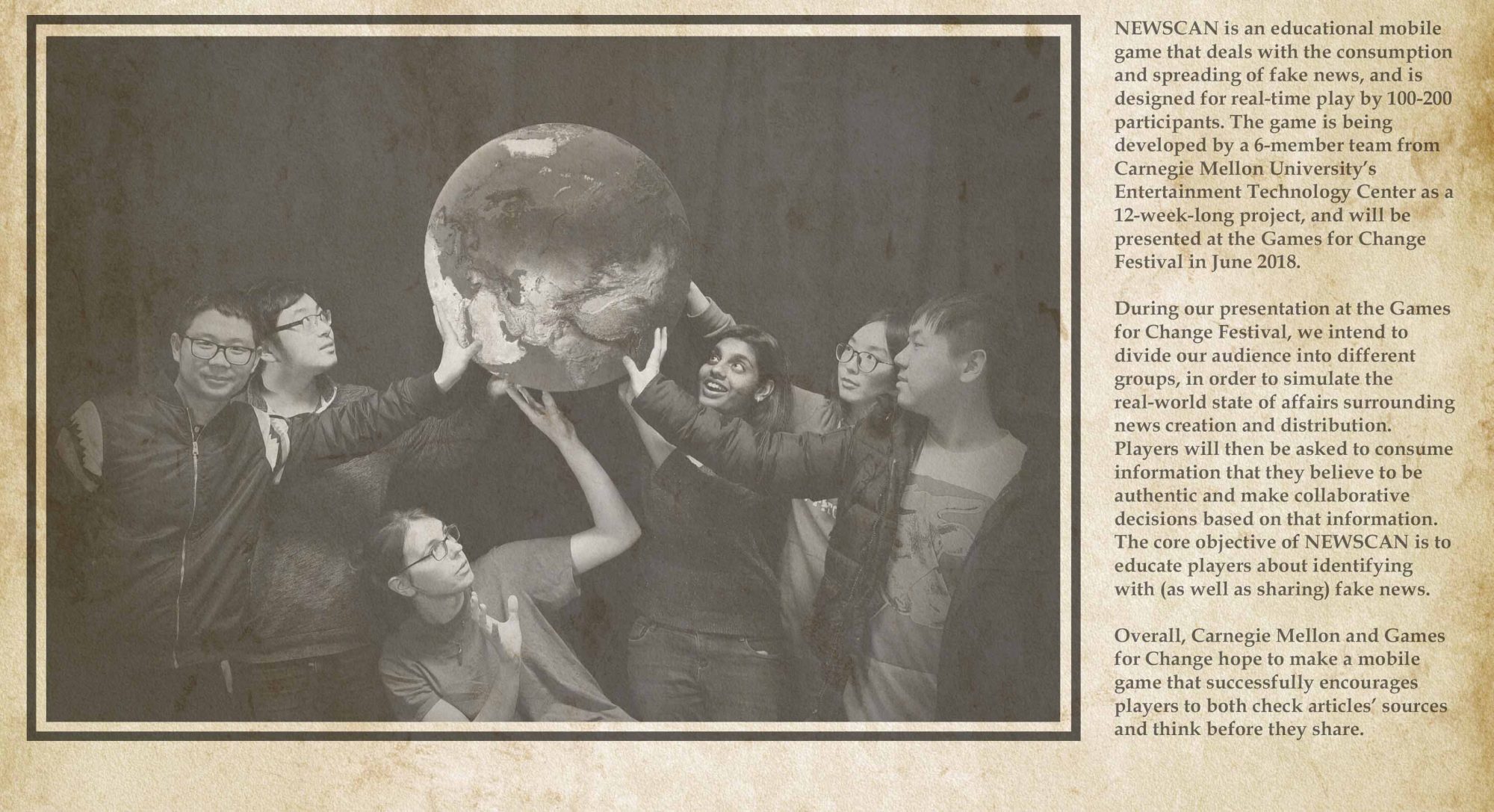This week, our team focused on generating an entirely new game concept with a more direct connection to the topic of fake news. In doing so, we hoped to address two main issues with our previous concept that had became apparent near the end of last week:
- The project goal is not clear enough.
- Guests cannot draw a connection between our game and fake news.
In crafting our new design, we drew inspiration from a Medium article (linked here) concerning a session at Google’s Newsgeist “un-conference” that tasked attendees with brainstorming clever ways to spread disinformation. This led us to the following basic idea:
- We will break our presentation’s attendees into small groups.
- Given a falsehood, those groups will have a set amount of time to come up with a tactic to spread that falsehood.
- Each group will then present their approach to fake news-spreading, and each approach will be judged in terms of their perceived effectiveness.
This was all well and good, but how could we actually gameify this?
During a sit-down meeting with ETC faculty member and game designer Jesse Schell, we were able to glean some suggestions for how to do so (while avoiding burgeoning pitfalls):
- The idea of making subjective judgements is very squirrelly.
- You could have a large group of AIs, and you’re trying to either persuade them or tell the truth.
- Take a look at the Wii’s “Everybody Votes”; this could provide you with some inspiration concerning how to visualize the idea of “getting more followers.”
- I like the idea of fighting for truth being different than fighting to persuade, and that fighting for the truth is harder (but maybe there’s a trick in which team truth can win out).

On Tuesday, our team had another meeting with Dave Culyba. We presented our new idea, along with the transformational goal we wanted to achieve with it (i.e. that people gain a more concrete understanding of how fake news spreads). He was able to provide us with some insightful feedback and questions to consider:
- Small group arrangement seems to be working, but getting people to talk to each other will be hard.
- Use transformational goals to ground your decisions. Always ask yourselves: “Is this part of the game getting people to understand how fake news is made?”
- How do we present our sources to reinforce that is coming from a credible places?
- How do players change over the course of the game? What are they like at the beginning versus the end?
Upon regrouping and thinking over both our meetings with Jesse and Dave, we developed the following game concept:
1. Space – Players will be split into three large factions, and each faction will then be split into tables that will each hold a group of 2-6 players. All tables will be located inside of the single room we will be provided at the Games for Change Festival.
2. Goal – Players win if their faction attracts the most followers by the end of the game. Players will see their factions represented as a pie chart on the screen at the front of the room (the followers that a particular faction manages to attract will run to that faction’s section of the pie chart).
3. Challenge – Players will essentially be competing with other players’ factions for followers’ attention. Given this fact, our game’s main challenge comes down to creating and spreading fake news content more effectively than other players’ factions.
4. Core Mechanics – Our experience will be divided into rounds that are timed. Each round, players will receive a topic/story to address. Then, players will craft a headline out of a set number of word tiles before navigating a menu to choose an audience they’d like to hit (as well as the platform they’d like to plant their content on, and so forth). Once players submit the piece they’ve made, their faction will receive a certain number of followers in response to the combination of selections they made, and once the current round’s timer runs out, the game will progress to its next round.
5. Components – During play, players will be using an iPad to make decisions concerning their fake news pieces. They will also need tables and chairs to sit on, and we will be making use of a projector screen to illustrate player progress.
6. Rules – We will start off the game by dividing people up into groups and making sure they are all sitting at tables. Then, we will provide a short introductory briefing that will help launch players into our game’s first round, and after the game’s final round, one faction will be declared the winner. During the course of the game, players will be able to collaboratively construct pieces of fake news and plant them (within the confines of our game’s simulation, of course). However, as far as writing goes, players will be limited to generating headlines out of preset lists of words; they will not be writing entire paragraphs of text from scratch at any point during the game.

On Thursday, our team had a faculty advisor meeting with Brenda Harger; we discovered that our current idea proved much stronger than our previous one, and she urged us to keep adding more details to our game design.
Next week, we plan to spend a good deal of time playtesting paper prototypes of our game. In order to accomplish this, we have divided ourselves into small teams (design, UX, tech, and narrative) so that we can work more efficiently in the coming weeks (we are also now using Trello to manage our personal responsibilities for each day’s work).

